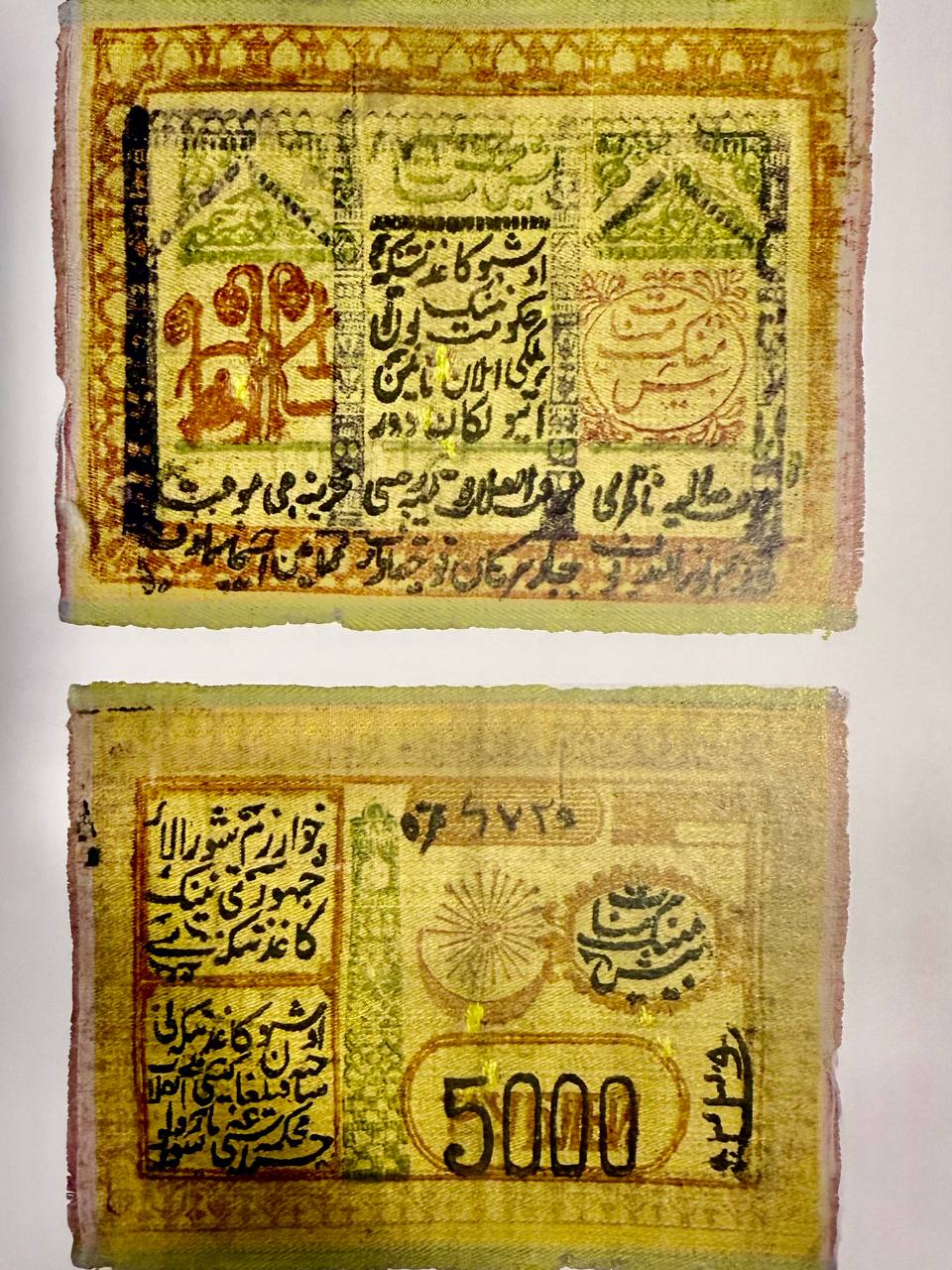Have you seen the first paper money printed in Khorazm?
 Among historical documents, there are certain exhibits that are valued not only as means of economic exchange but also as significant records embodying the political, cultural, and aesthetic perspectives of their time. One such example is the 5000 manat silk bond issued in 1920 by the Khorazm People’s Soviet Republic, which is currently considered one of the most important and rare items in the collection of the National Museum of the Republic of Tatarstan.
Among historical documents, there are certain exhibits that are valued not only as means of economic exchange but also as significant records embodying the political, cultural, and aesthetic perspectives of their time. One such example is the 5000 manat silk bond issued in 1920 by the Khorazm People’s Soviet Republic, which is currently considered one of the most important and rare items in the collection of the National Museum of the Republic of Tatarstan.
The banknote features the following inscription:
“This paper coin is backed by the government’s monetary sign. Paper coin of the Khorazm Soviet Republic. Anyone forging this coin shall be handed over to the Revolutionary Tribunal”.
This bond entered the museum’s collection in 1982 through the G.M. Dobrosmyslov collection, significantly enriching the museum’s holdings of historical banknotes. Through this collection, paper and silk currency originating from Khiva and Khorazm were added to the museum. These currencies serve not only as instruments of exchange but also as valuable documentary sources on the political events, economic processes, and cultural life in Central Asia during the years 1918–1922.
The bond is made of silk fabric, measuring 102 × 148 mm. It uses shiny, sky-blue, and blue silk threads. The text and illustrations are printed in red, green, blue, and black inks. This delicacy and colorful design make the bond one of the most original and aesthetically beautiful currencies in the world.
Another distinctive feature of this bond is the calligraphic style of its inscriptions. Information such as the denomination and date of issue is written in Uzbek (in both Arabic and Cyrillic scripts) and in Russian, using delicate and diverse fonts. These inscriptions are placed within specially designed ornamental panels and cartouches, enriched with stylistic elements typical of Islamic decorative art. The imagery includes architectural structures such as madrasas and mosques, reflecting various forms of Islamic architecture.
The silk banknotes issued by the Khorazm People’s Soviet Republic in 1920–1921 served not only as a medium of economic circulation but also as cultural documents expressing the spiritual identity, artistry, and national character of the people.
This bond invites museum visitors on a journey through history, standing as a vivid example of economic regulation, cultural thought, and aesthetic ideals in the Islamic world.
In the image: A 5000 manat silk bond issued in 1920 by the Khorazm People’s Soviet Republic. It is currently preserved in the collection of the National Museum of the Republic of Tatarstan.
Most read

Over 100 experts from more than 20 countries of the world are in Tashkent!

President of Serbia Aleksandar Vučić visited the Islamic Civilization Center in Uzbekistan

The Center for Islamic Civilization – a global platform leading towards enlightenment











